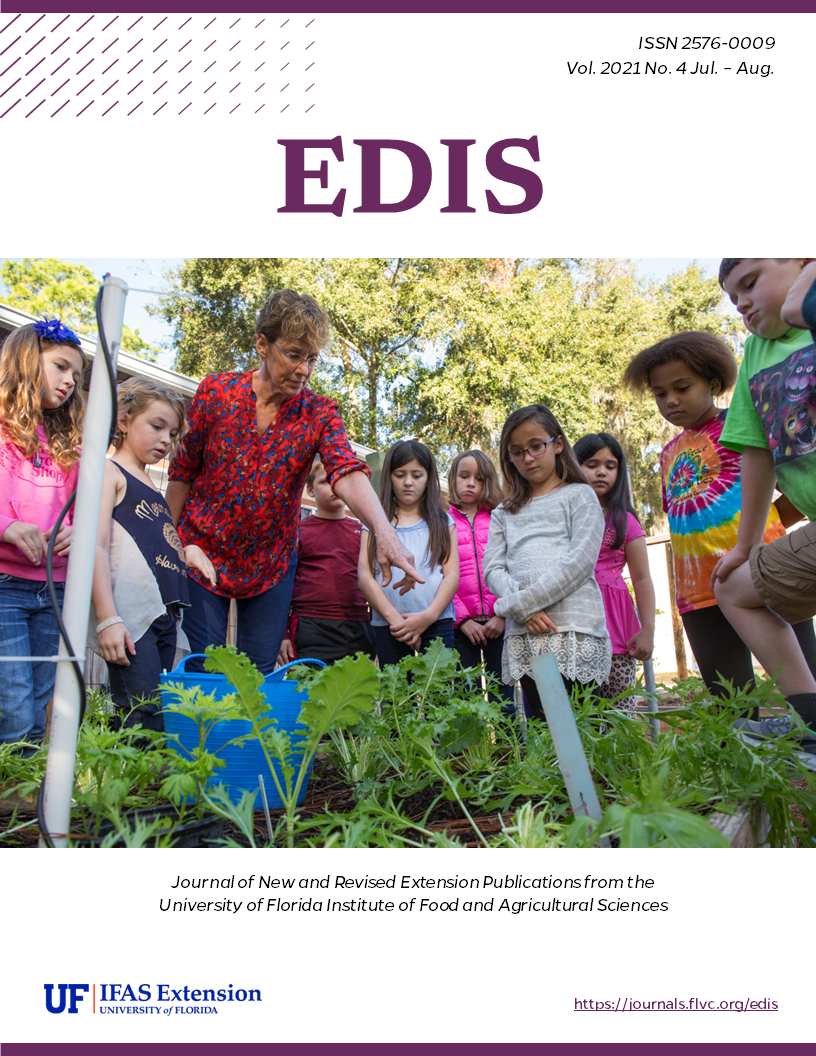Abstract
Blackberry production has recently expanded to the Southeast. In Florida, inadequate winter chill limits blackberry production by causing poor and erratic budbreak. To compensate, we developed chemical budbreak induction methods based on the field trial data collected over 3 growing seasons. This new 4-page article provides guidelines for the budbreak induction methods, with the aim of supporting the development of subtropical blackberry production. Written by Shinsuke Agehara and Syuan-You Lin.
https://edis.ifas.ufl.edu/hs1419
References
Agehara, S., S.-Y Lin, and Z. Deng. 2019. “Choosing the Right Blackberry Cultivar in Subtropical Florida.” EDIS 2020 (1). https://doi.org/10.32473/edis-hs1354-2020
Carter, P. M., J. R. Clark, C. D. Particka, and D. Y. Crowne. 2006. “Chilling Response of Arkansas Blackberry Cultivars.” J. Amer. Pomol. Soc. 60:187–197.
Chapman, K. R., J. Saranah, and B. Paxton. 1979. “Induction of Early Cropping of Guava Seedlings in a Closely Planted Orchard Using Urea as a Defoliant.” Austral. J. Expt. Agr. 19 (98): 382–384. https://doi.org/10.1071/ea9790382
Dhillon, J. S., R. S. Boora, D. S. Gill, and N. K. Arora. 2018. “Effect of Different Chemicals and Hand Thinning on Crop Regulation in Guava (Psidium guajava L.) cv. Shweta.” Agr. Res. J. 55 (2): 365–369. https://doi.org/10.5958/2395-146X.2018.00067.4
Díaz, D. H., A. Alvarez, and J. Sandoval. 1987. “Cultural and Chemical Practices to Induce Uniform Bud Break of Peach and Apple under Warm Climates in Mexico.” Acta Hort. 199:129–136. https://doi.org/10.17660/actahortic.1987.199.31
Drake, C. A., and J. R. Clark. 2000. “Determination of the Chilling Requirement of Arkansas Thornless Blackberry Cultivars.” The Student Journal of Dale Bumpers College of Agricultural, Food Life Sci. 1:14–19.
Ferguson, J., J. Chaparro, J. Williamson, R. Rouse, and R. Mizell. 2007. “Florida Subtropical Peaches: Production Practices.” EDIS 2007 (20). https://journals.flvc.org/edis/article/view/117046
Lin, S.-Y., and S. Agehara. 2020a. “Exogenous Gibberellic Acid Advances Reproductive Phenology and Increases Early-Season Yield in Subtropical Blackberry Production.” Agronomy 10 (9): 1317. https://doi.org/10.3390/agronomy10091317
Lin, S.-Y., and S. Agehara. 2020b. “Exogenous Gibberellic Acid and Cytokinin Effects on Budbreak, Flowering, and Yield of Blackberry Grown under Subtropical Climatic Conditions.” HortScience 55 (12): 1938–1945. https://doi.org/10.21273/hortsci15381-20
Lin, S.-Y., and S. Agehara. 2021a. “Foliar Application of Defoliants after Winter Chill Accumulation Changes Phytohormone Dynamics and Improves Budbreak in Blackberry under Subtropical Climatic Conditions.” Plant Growth Regulat. 94:171–181. https://doi.org/10.1007/s10725-021-00703-x
Lin, S.-Y., and S. Agehara. 2021b. “Foliar Application of Defoliants before Winter Chill Accumulation Advances Budbreak and Improves Fruit Earliness of Blackberry under Subtropical Climatic Conditions.” HortScience 56 (2): 210–216. https://doi.org/10.21273/hortsci15533-20
Olmstead, M. 2015. “Defoliating Peaches.” Accessed Feb. 27, 2021. https://crec.ifas.ufl.edu/extension/trade_journals/2015/2015_September_peaches.pdf
Singh, G., A. K. Singh, S. Rajan, and S. R. Bhriguvanshi. 2002. “Strategy for Crop Regulation in Guava (Psidium guajava L.) through Foliar Urea Sprays and Its Effect on Different N-forms in Leaves.” J. Appl. Hort. 4 (2): 93–98. https://doi.org/10.37855/jah.2002.v04i02.26
US Department of Agriculture. 2017. “Quick Stats.” Accessed Feb. 27, 2021. https://quickstats.nass.usda.gov/results/08D195DC-7B67-32E7-9167-4314A69E6E69

